We called it the Hobo Barn. At one time the mansion was likely the stuff of Gatsby-esque legend. It was massive. Simply stunning. Even in its dilapidated state, 13-year-old boys with summers free and a wide open agenda could see what the place once was.
Formally called Bazelle Acres, the old house stood abandoned on a hill above U.S. Highway 80 in Longview, Texas, for as long as anybody around could remember. For us kids, the appeal was the pond in the backyard — choked with undergrowth and shaded by giant loblolly pines, it reliably produced bream and occasionally, a nice bass would dart from the weeds to snare a Beetle Spin lure or a Carolina-rigged plastic worm. It was a small pond — maybe a couple of acres, tops. Through the pines from the southeast bank, you could see the roof of the abandoned house.
It was clandestine fishing, for, even though the house stood empty, in order to fish the pond, one had to trespass. The easiest way in was right up the driveway, but a rusty and gnarled wrought-iron gate stood between the highway and the house well up into the trees. The safest way in? The railroad tracks off to the south of the mansion, or, if we were sneaky enough, a hop over a worn-down wire fence and a quick walk over pine straw and through the palmettos to the water’s western edge. All were chancy for a kid — trains ran the rails daily, and the little road to the west of the property was a minor traffic artery. There was always the chance we could be spotted, and I can’t count the times my parents heard from nosey neighbors that we were “traipsin’ across the woods to poach fish from Bazelle Acres pond.”
Indeed, time and again, we were scolded for fishing the little pond, but not by the land’s actual owners. Honestly, given the state of the house, I don’t think the old manor’s owners cared one lick who ventured onto the property to fish. Instead, we’d hear about it from our parents, who were more concerned with the nefarious goings on in the abandoned, left-to-rot house. There it was, situated just off the tracks, where transients and hobos could hop off the trains that throttled by and seek shelter in the old mansion, or in a nearby two-story wooden outbuilding that looked as if a stiff breeze pushed by a southern gullywasher would knock it over without a second thought.
And, of course, transients and hobos were not high on our parents’ list of social acquaintances — we were warned of every possible horror taking place in the old house: Satanic rituals, witchcraft, drug use, murdered prostitutes and, of course, hideous ceremonies involving animal sacrifice. That was a big one back then, apparently. Somehow, it inspired more fear in our hearts than any of the other nightmarish events that most certainly occurred just a few hundred yards away from where we cast live crickets to wild sunfish and bass.
The fishing was great, and the only “hobo” we ever encountered in the woods around the mansion offered my 10-year-old brother a hit off a joint. But it took us a couple of years to build up the courage to enter the old house for fear that the stories of which we’d been warned were true.
But we did eventually muster up the stones to walk up to the house from the pond one sticky July afternoon. It was just too damned hot to fish anymore, and our curiosity finally got the best of us. There were four of us — me; my buddy Eddie, who was as close to a real outdoorsman as anyone else I knew; my little brother Brice, who was often forced upon us by my mother who was quick to shout, “Take your brother with you!” as I tried to sneak out the door to go fishing; and my friend Kenny, who was dead set against going into the house that hot East Texas day.
Kenny was the smart one.
I remember Kenny’s face as we walked up the overgrown path from the pond to the house. I could almost watch as the blood drained from his head and his visage became all white and pasty.
“I’ll stand guard,” he said, as we approached the back door of the decaying old mansion. The ground-level door hung loose on its hinges, leaning inward as if to invite us inside for our very own murders. The house, a blonde brick turn-of-the-century Georgian, stood large and foreboding against the backdrop of the woods, and I’d be lying if I told you I could tell you this tale aloud and not feel my skin crawl. I looked over at Eddie, who had an eager look on his face, and then at Brice, who at maybe 10 years old, was steadfast in his attempt to hang with the “big kids.” I remember pausing on the concrete stoop and looking straight up at the house that towered three stories above us.
I was terrified. Amityville Horror terrified. Pet Semetary terrified.
We’d been told by others who’d been there before us that there were devilish inscriptions on the floors and the walls, and that there were piles of what might be bloody clothes strewn about the old manse, leavings from various serial-killer beheadings and the like. We were also told that the old house had an elevator at one time, and we heard tales of a built-in aquarium system that served as home to a school of voracious piranhas.
We stepped inside the old house, and the first thing we noticed was the smell. Mixed in with the generic abandoned-mansion smell was the fetid odor that accompanied animal scat and garbage left by the nefarious hobos after they took shelter and moved on down the line (it was the best explanation a 13-year-old kid could come up with).
The old cyprus floors were rough and squeaky, even under our diminutive weight. The plaster walls were yellowing and crumbling, revealing the chicken-wire used during the home’s construction as a base for the material. Wooden slats hung loose on single nails, cracked and weathered. Moss, algae and mold grew unchecked in the corners.
As we stepped further into the house — taking great care not to awaken the Satan spawn that we were certain slumbered somewhere in the bowels of the mansion during the heat of the day — I felt a nudge at my back, and I startled, loading up a tween fist to deliver to my attacker. It turned out to be Kenny, who decided it was safer in the house with us than on the stoop by himself. We moved further through what were likely living quarters, and then stood at the lip of a long, dark hallway that led into what I would now describe as a very formal dining room. As we stepped, the wooden floor creaked and groaned. The July East Texas sun filtered through broken window panes and sent its rays across the decaying walls of the old house, and we could see that we were kicking up dust and likely breathing in some pretty horrendous stuff.
But we persisted. In a tight bunch, we walked down the hallway and emerged into the dining room, which was spacious and blessed with a high ceiling, albeit one that was busy crumbling as the humidity and the heat continued to take its toll. The floor was littered with trash. Empty What-a-Burger bags (it’s a Texas thing), old clothes and other garbage lay strewn about the room. And there, on the floor was what we feared most: a carefully inscribed pentagram.
“This must be where they sacrifice the virgins,” Kenny said quietly. We all looked at each other. While we might not have fit the bill of white-gowned sacrifice-ee tied to the floor in preparation for some bloody, evil ritual, each of us was most assuredly a virgin.
“What’s a virgin?” Brice asked. Nobody answered.
Off to our left, we learned the elevator was, indeed, a real feature in the home. As was the aquarium, that separated the dining room from a front room or parlor. Not one of its panes stood intact, but little aquarium features — like the pewter treasure chest and the formed resin coral still decorated its base.
The walls, too, were carelessly scrawled upon, featuring some fairly robust profanity that, for young boys, anyway, spurred more questions than answers. More pentagrams. Lots of phone numbers. An old Meatloaf album cover was thumbtacked to one wall.
In the far corner of the room was a fireplace, and it was loaded with charred wood — clearly this room had, indeed, provided shelter for someone at some time. Kenny walked over the fireplace and grabbed a charred stick. He then walked over to the near wall and simply scribed, “We were here.”
Brice took the stick and wrote his name. Then Eddie, then me, and finally Kenny. There we stood, after years of wondering exactly what this place looked like, in the old, evil house that was, most assuredly, the home of spectres and spirits come nightfall. It was the stuff of legends, and we’d finally mustered up the courage to venture within.
Eddie walked over and looked up the elevator shaft from his bottom-floor perspective.
“I can’t tell what floor the car is on,” he said, and his voice echoed back down from the chamber. We all looked again at one another, almost as if we knew what to expect. And then it happened. It started as a rumbling sound, kind of like a bowling ball gliding down the lane over fresh oil. Seconds later, the bats emerged in a torrent — I remember thinking, “Wow, that’s just like in the movies.”
Then I remember being so terrified that I ran in place for a full second before I grabbed my little brother by the arm and tugged him back through the hallway, into the living room and finally out the ground-floor door into the fresh summer air. Kenny and Eddie were on our heels, and we all tumbled into a little pile arms and legs, half screaming and, oddly, half laughing.
The laughter, of course, was simple relief. We’d been there. Done that. We needn’t do it again. And we all watched as nearly every window in the house served as escape hatches for the dozens upon dozens of big brown bats Eddie had managed to awaken several hours early.
That day remains among the most terrifying and exhilarating in my life.
Just a few years back, the kids and I took a road trip over the holidays to spend Christmas with my father in Baton Rouge. The route from Idaho took us through good, old Longview. I took a detour to show the kids the old house I lived in on Chestnut Lane, my alma mater and a few other notable places. Then, we drove down to Highway 80 and I showed them where, a few years after Brice, Eddie, Kenny and I explored the old mansion, Brice and I were rear-ended by a drunk driver. How we walked away from that wreck is anybody’s guess — I’ve always wondered why any higher power would save my little brother from such a horrific car accident only to take him years later by putting him through a four-year battle with ALS.
Then I remembered the old house. The wreck occurred within just a few yards of the old gate leading up to the mansion, and, sure enough, the driveway was still there — not a gate blocking my way. I took a chance and directed the car up the driveway, half expecting to see the old house, completely restored and hoping to get a look at the pond again, all those years later.
I was sadly disappointed. The house had been demolished. Overgrown piles of blonde brick and concrete slabs jutted through a brown field, a mere remnant of the mighty mansion that once stood there. The pond in the back? It had either been filled in or, just as likely, the spring that fed it has simply dried up over time. No bream, no bass, no fishing. It was completely unrecognizable.
I’m glad the kids got to see a part of my past — and theirs, too, by extension. But I wish I hadn’t taken that little drive up to the site of the old Hobo Barn. I’d like to think that someone at sometime over the 40 years that have passed, had the means to return it to its glory, to restore and revitalize it and make it worthy of being called Bazelle Acres once again.
Or, perhaps just as much, I wanted to believe that the kids of the neighborhood still snuck into the old pond to fish and explore.
As we left town that afternoon, headed south and east, my daughter sat up in the passenger seat and put her hand on my arm. Clearly, seeing the old house and the dried-up pond had a palpable impact on me.
“I’m sorry, Daddy,” she said. “I bet it was really beautiful once.”
I looked back at her and nodded.
“It was perfect,” I said.



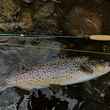
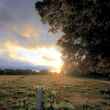
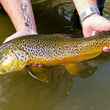








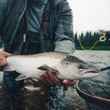

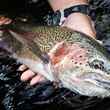



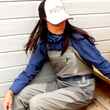
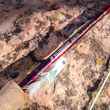


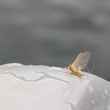
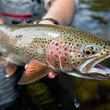
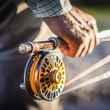

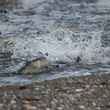
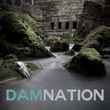
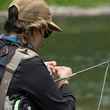
Comments
Matthew Moedritzer replied on Permalink
Good story, thanks for sharing!
Pages